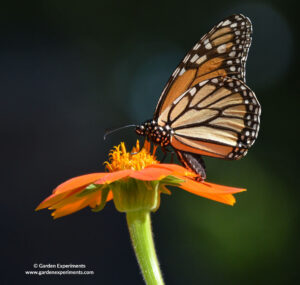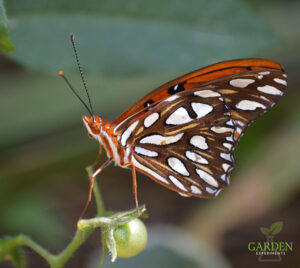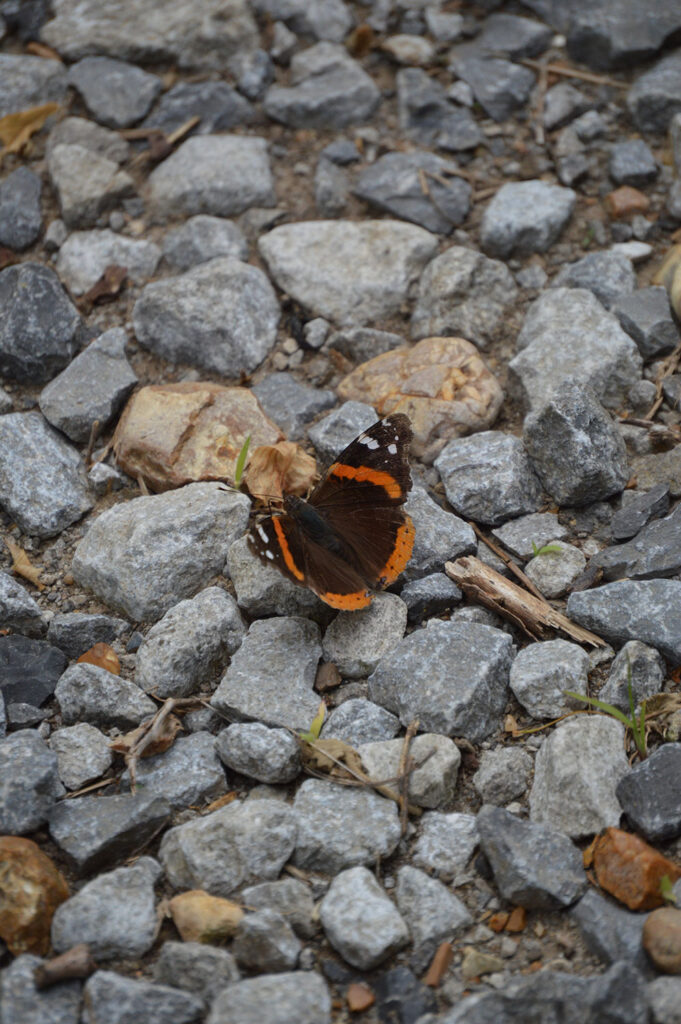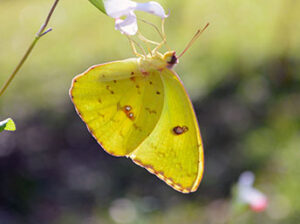The orange and black colors of monarch butterflies are well-known and we keep an eye out for them each year. It is common knowledge that these butterflies migrate from their nesting grounds in Mexico into the northern United States and back each year. Did you know other butterflies migrate as well?
The most prominent display of migratory butterflies in my garden each year are the Gulf fritillary (Agraulis vanilla) and the cloudless sulphur (Phoebis sennae).
Gulf Fritillary Butterflies
I eagerly await the arrival of the Gulf fritillaries – I love their bright orange, black, and silver colors. The adults lay eggs on my purple passionflower. I watch the bright orange caterpillars with bristly black hairs strip the leaves off of the vine, create cocoons, and then emerge as butterflies in the mid- to late-summer. It’s fascinating to get such an up-close look at their life cycle.
Cloudless Sulphurs
The cloudless sulphurs are harbingers of the fall, showing up first in early spring and then in late fall to my garden. The fall migration of these butterflies is in much higher numbers (in the hundreds) than those returning northward in spring.
Monarch Butterflies
Monarchs stand apart from the other migratory butterflies, because they are the only ones in North American that migrate in two directions – south and west towards Mexico and Southern California, and they are the only ones that migrate such a long distance – nearly 2,500 miles away.
Follow a map of the migration of monarch butterflies here: http://www.learner.org/jnorth/maps/monarch.html.
Other Butterflies that Migrate in the United States
- Common buckeye (Junonia coenia)
- Painted lady (Vanessa cardui)
- American lady (Vanessa virginiensis)
- Cloudless sulphur (Phoebis sennae)
- Question mark (Polygonia interrogationis)
- Fiery skipper (Hylephila phyleus)
- Clouded skipper (Lerema accius)
- Mourning cloak (Nymphalis antiopa)
- Red admiral (Vanessa atalanta)
- Gulf fritillary (Agraulis vanillae)
- Little yellow (Pyrisitia lisa)
- Long-tailed skipper (Urbanus proteus)
- Sachem (Atalopedes campestris)
- Ocola skipper (Panoquina ocola)
Why Do Butterflies Migrate?
Like all insects, butterflies are cold-blooded, meaning their body temperature is regulated by the external temperature of the air and surrounding conditions. As winter approaches, many butterflies must move southwards to overwinter in a warmer climate.
Butterflies also migrate for their food sources. Migration northward is important for the next generation to find more sources of their host plants. If they all stayed in the same spot to breed, there wouldn’t be enough food for all of the caterpillars.
Resources
- Learn more about monarch migration here
- Learn more about migration and dispersal of butterflies




